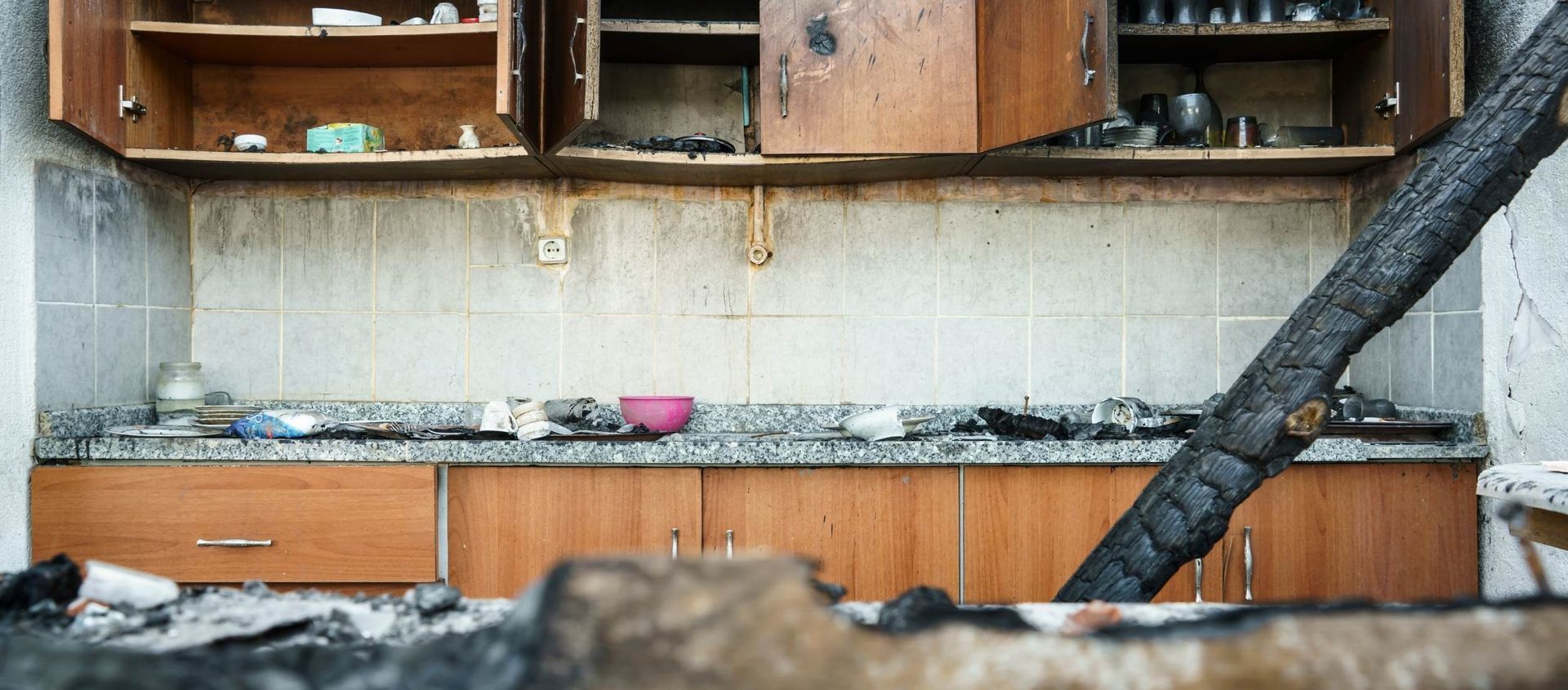DryMax Restoration's Expert Tips
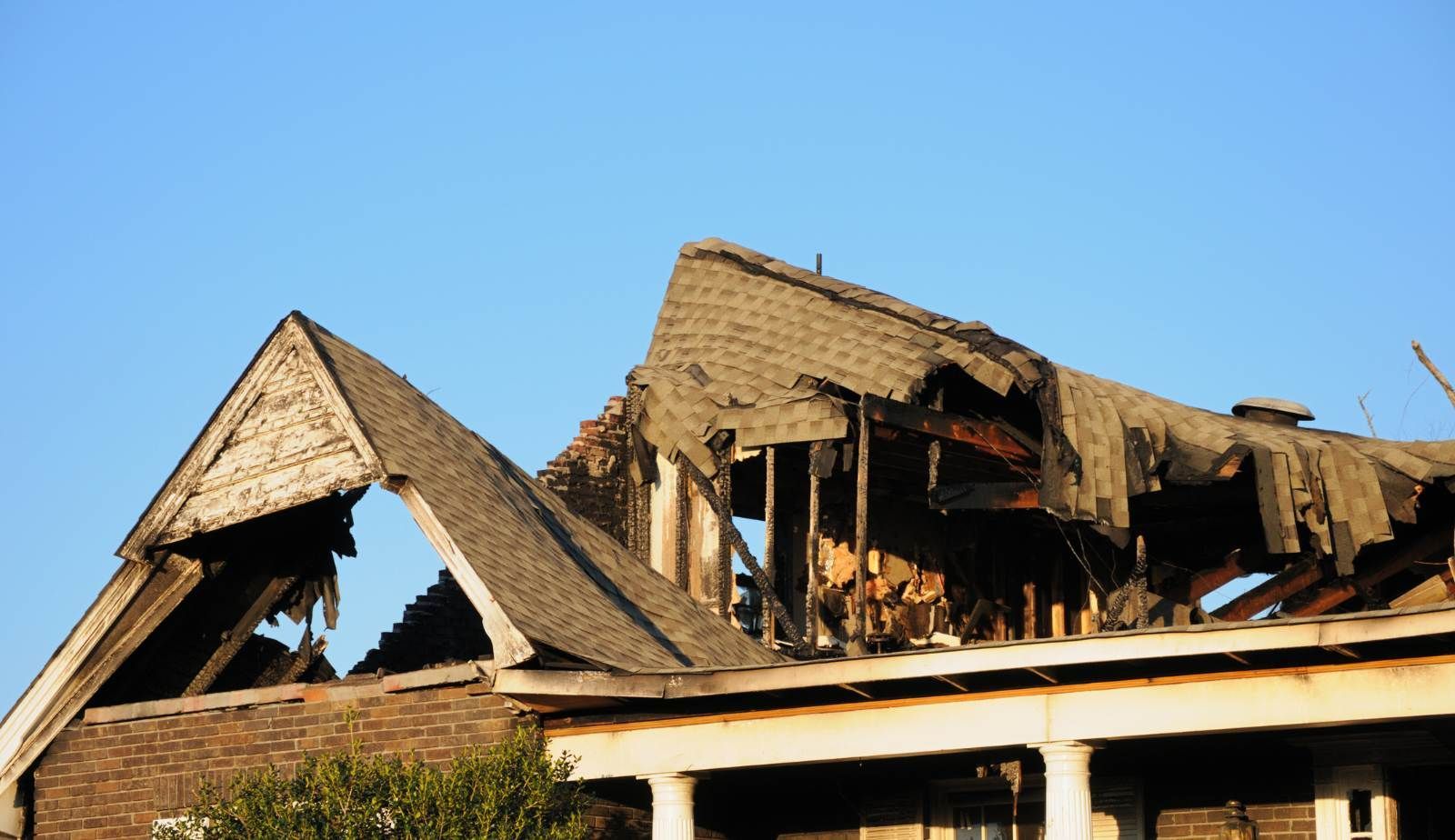
Holiday celebrations bring warmth and joy, but they also increase the risk of home fires, especially in Louisiana’s cold and festive season. Decorations, lights, and heating sources create common hazards that can quickly turn a joyful occasion into a dangerous situation. Understanding these risks and taking simple safety steps can significantly reduce the chance of holiday fires in homes. Drymax emphasizes the importance of keeping Christmas trees well-watered, avoiding placing decorations near heat sources, and inspecting holiday lights for damage before use. These practical measures address the leading causes of holiday fires, which often involve electrical issues and flammable decorations. With increased fire incidents during the winter months, Louisiana homeowners must stay vigilant. By following tested fire safety guidelines, families can enjoy holiday traditions while protecting their homes from preventable fire hazards. Understanding Holiday Fire Hazards in Louisiana Winter holiday celebrations in Louisiana bring increased fire risks due to seasonal decorations, heating methods, and unique local factors. Recognizing why home fires rise during this period and identifying state-specific dangers can help homeowners protect their properties and families. Why Home Fires Increase During Winter Holidays Home fires spike during winter holidays largely because of increased use of heating appliances, decorative lighting, and open flames. The National Fire Protection Association (NFPA) reports nearly one-third of home decoration fires occur in December. Electrical malfunctions and unattended candles are common causes. Heating equipment like fireplaces, radiators, and space heaters add to the risk, especially when placed near flammable holiday decorations. Overloaded outlets from string lights or damaged cords can create sparks. The presence of dry Christmas trees further elevates fire hazards, as they ignite easily without proper watering. Social gatherings involving alcohol and smoking also contribute to accidents. Combined, these factors significantly raise fire incidents in homes during the holidays. Key Louisiana-Specific Fire Risks for Homeowners Louisiana homeowners face distinct challenges during the holidays due to climate and cultural practices. The warmer climate means many still use heating devices indoors, increasing close proximity of decorations to heat sources. Fire departments report decoration fires often result from placing ornaments too near fireplaces and heaters. Additionally, holiday lighting used extensively in homes and outdoor displays sometimes involves older electrical systems common in older Louisiana residences. The risk intensifies when non-UL-listed or damaged lights are used. Cultural festivities often include candles and open flames, which require careful supervision. The combination of these factors makes adherence to fire safety guidelines crucial in Louisiana, including keeping trees watered and maintaining safe distances between heat sources and flammable materials. Holiday Fire Safety Tips Every Homeowner Should Know Holiday fire risks increase due to decorations, cooking, and heating devices. Taking specific precautions can reduce these hazards significantly and protect both people and property through practical measures and the right equipment. Best Practices for Holiday Fire Safety Homeowners should keep all flammable items like curtains, towels, and paper products away from heat sources such as stovetops and fireplaces. Decorations must be flame-resistant or non-combustible, and electrical lights should be checked for damaged wires before use. Candles require extra caution: they should never be left unattended and must be placed on stable, non-flammable surfaces. Assigning a responsible person to ensure candles and smoking materials are fully extinguished before leaving a room or going to bed can prevent fires. Using a fire screen in front of fireplaces reduces the risk of sparks igniting nearby materials. Maintaining clear paths around heaters and avoiding overloading electrical outlets are vital to prevent electrical fires. Protecting Loved Ones and Property Smoke alarms play a critical role in early fire detection. Homeowners should test alarms monthly and replace smoke alarms every ten years. Carbon monoxide detectors are also necessary and should be replaced every five to seven years. During holiday gatherings, it is important to have an escape plan that all family members know. Exits should remain unobstructed, and everyone should understand what to do if a fire occurs. Supervising cooking activities and keeping a fire extinguisher nearby are essential, as unattended cooking is a common cause of holiday fires. Children should be kept away from open flames and hot surfaces. Essential Fire Safety Supplies A well-prepared home includes fire extinguishers placed in the kitchen, near fireplaces, and on every floor. Homeowners should know how to operate them properly. Smoke alarms and carbon monoxide detectors must be installed on every level of the home and inside bedrooms. Keeping batteries fresh or using hardwired models ensures uninterrupted protection. Having fire-safe decorations, a fire screen for fireplaces, and clear access to exits completes the essential safety kit. Regular maintenance of heating equipment and electrical cords reduces the chance of malfunctions causing fires. Preventing Christmas Tree Fires Christmas trees can quickly become fire hazards if not properly selected, maintained, and disposed of. Homeowners should focus on choosing fresh, flame-resistant trees, keeping them well-watered, and ensuring safe removal after the holidays to minimize fire risks. Christmas Tree Selection and Placement Selecting a fresh tree with green, flexible needles is critical for reducing fire danger. A dry tree ignites and burns much faster than a well-hydrated one. Artificial trees should be labeled as flame retardant. Placement is equally important. Trees must stand at least three feet away from heat sources such as fireplaces, radiators, portable heaters, and candles. Keep the tree away from doorways and high-traffic areas to prevent it from being knocked over. Using flame-retardant decorations and lights meeting safety standards further reduces risk. Watering and Maintenance Consistent watering keeps a natural tree moist and less likely to catch fire. A well-watered tree can absorb large amounts of water daily, preventing needles from drying out. Homeowners should check water levels daily and refill the tree stand to keep the base submerged. Removing fallen needles regularly limits flammable debris accumulation. Inspect lights and electrical cords for damage before use. Avoid overloading outlets or using extension cords improperly. Turn off tree lights when unattended or when leaving the home. Disposal of Real Trees Proper disposal after the holidays prevents leftover dry material from becoming a fire hazard. Most communities offer tree recycling or collection programs specifically for this purpose. If no program is available, trees should be cut into smaller pieces and kept away from homes and structures until proper disposal. Never burn Christmas trees indoors or in fire pits, as they can ignite quickly and produce toxic smoke. Homeowners must ensure that disposal methods comply with local regulations to maintain neighborhood safety and reduce potential emergency incidents.
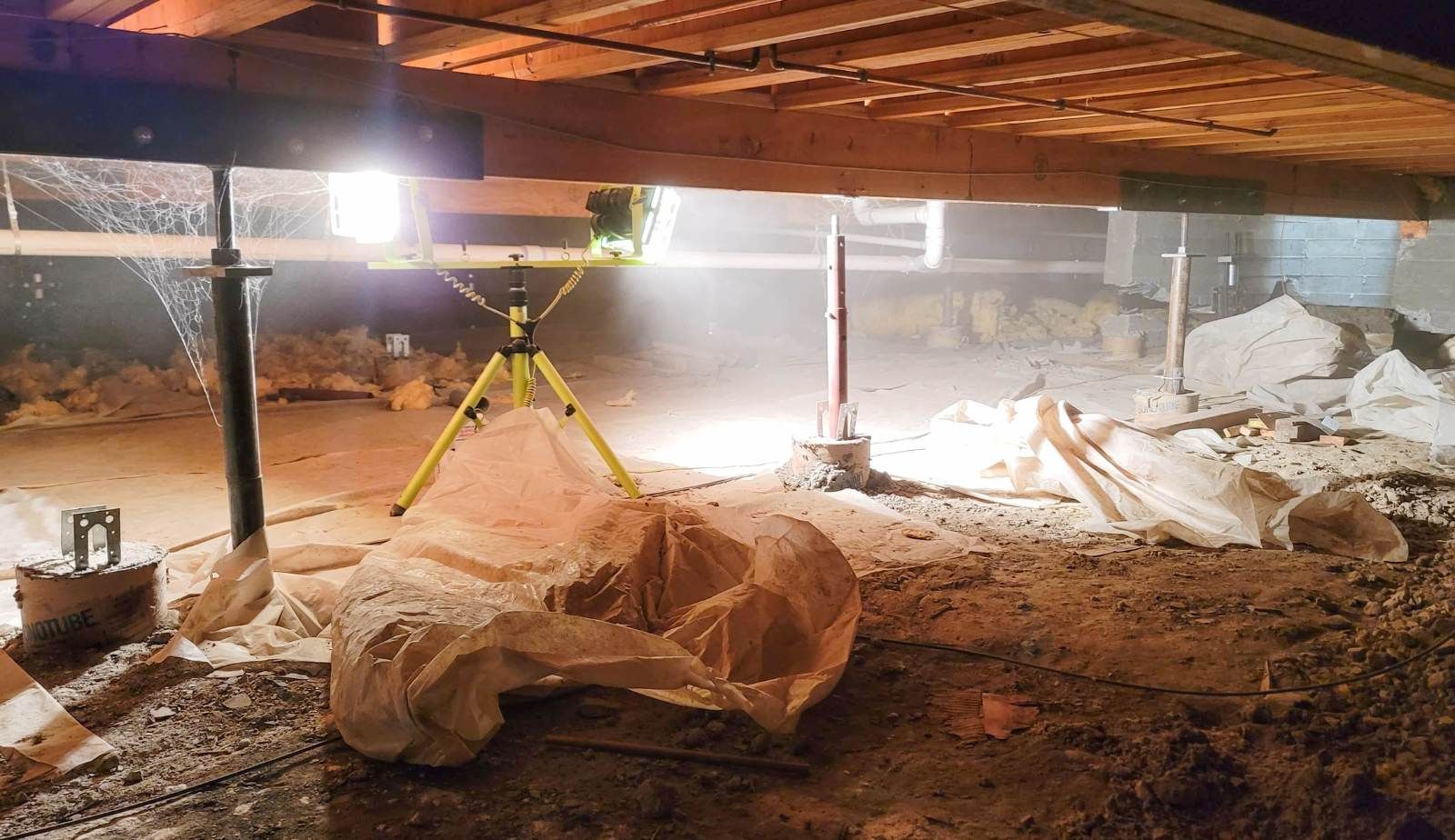
A flooded crawl space in Baton Rouge can quickly become a serious problem, threatening the structural integrity of a home and creating an environment for mold and mildew growth. Drymax emphasizes the importance of acting swiftly to remove standing water and dry the area thoroughly to prevent lasting damage. Drymax advises homeowners to use professional water extraction services combined with powerful drying equipment, like dehumidifiers and fans, to ensure the crawl space is completely moisture-free. Regular maintenance and proper water management around the foundation can also reduce the risk of future flooding. Understanding the risks and following expert guidance can help homeowners protect their property effectively. Drymax’s experience and rapid response in Louisiana make them a reliable resource for managing crawl space flooding with proven restoration methods. Immediate Actions for a Flooded Baton Rouge Crawl Space Prompt and careful steps are essential to mitigate damage when a crawl space floods. Prioritizing safety, accurately evaluating the situation, and starting water removal quickly can reduce structural and health risks. Ensure Electrical and Personal Safety The first priority is to turn off electrical power to the affected area. Water and electricity combined present a serious risk. If the breaker is accessible and safe to reach, cutting power prevents electrocution and electrical fires. Residents should avoid entering the crawl space until they confirm the area is safe from electrical hazards. Protective gear such as rubber boots and gloves can help reduce risk when inspecting or working near flooded spaces. If unsure, it is advisable to contact a professional electrician to cut power safely. Clear communication with family members about avoiding the flooded zone helps prevent accidents. This step protects both people and emergency responders. Assess the Scope of Flooding It is important to determine how much water has accumulated and what areas of the crawl space are affected. Inspect visually for standing water, damp spots, and saturation of insulation. Identify any sources of the water intrusion , such as drainage issues or leaks. This aids in addressing the problem beyond simple water removal. Documenting damage, including warped wood or compromised supports, assists with insurance claims. A thorough assessment also informs decisions on whether professional remediation services are necessary. Taking photos or videos while safely outside the crawl space can provide useful evidence without exposing oneself to hazards. Remove Standing Water After confirming safety and assessing the problem, begin removing water promptly to limit further damage. Using a sump pump or a wet/dry shop vacuum designed for water extraction is effective. Remove soaked insulation and wet debris quickly, as these materials promote mold growth and structural weakening. Disposing of damaged items according to local regulations helps maintain a clean environment. If water removal is extensive, professional drying equipment such as dehumidifiers may be required. Doing so reduces moisture in the air and underlying materials, protecting structural integrity. Drymax recommends prioritizing this step to prevent prolonged water damage and costly repairs. Key Causes of Crawl Space Flooding in Baton Rouge Crawl space flooding in Baton Rouge stems from a combination of natural and structural factors. Several common issues contribute to persistent water intrusion, including weather patterns, soil and drainage conditions, and home infrastructure problems. Heavy Rainfall and Regional Climate Challenges Baton Rouge experiences frequent heavy rainfall and high humidity , which significantly increase the risk of crawl space flooding. Intense storms can deliver large volumes of water in a short period, overwhelming soil absorption and drainage systems. The area's flat terrain can also slow water runoff, allowing it to accumulate near foundations. Persistent moisture from seasonal rains creates an environment prone to water pooling under homes. This saturation makes it easier for water to seep into crawl spaces, especially if protective barriers or drainage systems aren’t adequate. Understanding the local climate’s impact is essential for managing moisture problems effectively. Drainage and Grading Issues Improper grading and faulty drainage systems are leading causes of water buildup beneath homes. If the soil around a house slopes toward the foundation instead of away, rainwater naturally collects near or under the structure. Downspouts and gutters that don’t direct water far enough away contribute to this problem. Drainage systems may fail due to clogging, damage, or poor design. Inadequate drainage allows water to pool in low spots around the crawl space. Installing and maintaining proper grading, gutters, and drainage solutions is critical to preventing excess moisture and flood risk. Plumbing Failures and Foundation Cracks Plumbing leaks, broken pipes, and damaged water heaters can introduce significant water into a crawl space unexpectedly. Even small leaks can cause persistent dampness that escalates into flooding over time. Foundation cracks, common in older homes or those settling unevenly, also allow water intrusion. These cracks act as direct pathways for groundwater or rainwater to enter the crawl space. Regular inspection and timely repair of plumbing and foundation integrity help minimize water infiltration risks.
Hidden water damage is a common issue for homeowners in Louisiana due to the state's humid climate and frequent storms. This type of damage often goes unnoticed until it causes significant problems, including structural weakening and mold growth. Key signs such as damp walls, ceiling stains, and musty odors are crucial indicators that hidden water damage may be affecting a home. Drymax, a certified restoration company, highlights the importance of early detection and professional assessment to limit costly repairs and health risks. Homeowners who recognize these signs early can take proactive steps to maintain their property's integrity. Understanding the top signs of hidden water damage is essential for anyone living in Louisiana. Recognizing these warning signals can help quickly address underlying issues before they escalate. Understanding Hidden Water Damage in Louisiana Homes Hidden water damage in Louisiana homes often develops quietly behind walls, beneath floors, or within ceilings. It thrives in the state’s humid climate and frequent storms, making early detection critical. The following discussion clarifies what hidden water damage is, why it is widespread in Louisiana, and the risks it poses to homeowners. Definition of Hidden Water Damage Hidden water damage occurs when moisture infiltrates parts of a home that are not visible during regular inspections. This includes areas like behind drywall, under floorboards, inside crawl spaces, and within ceiling cavities. Unlike obvious flooding, this damage progresses slowly and silently. Moisture buildup in these concealed zones promotes mold growth and wood rot before homeowners notice signs. The damage often results from leaks, poor drainage, or high indoor humidity trapping water in these hidden spaces. Detecting hidden water damage requires attention to subtle signs and sometimes professional tools. Why Hidden Water Damage Is Common in Louisiana Louisiana’s environment significantly contributes to hidden water damage. The state experiences high humidity levels year-round, averaging between 70% and 90%. This moisture-laden air increases the chance of condensation inside wall cavities and under flooring materials. Frequent storms and heavy rainfall exacerbate the problem, allowing water intrusion through roofs, windows, or foundation cracks. Many homes in Louisiana also sit on slab or crawl space foundations prone to moisture accumulation, making structural materials vulnerable. These combined factors create ideal conditions for undiscovered water damage. Key Risks Associated With Hidden Water Damage The risks hidden water damage presents include structural weakening, mold growth, and health threats. Moisture can deteriorate wood framing, drywall, and insulation, reducing a home’s integrity and requiring costly repairs. Mold spores thrive in damp environments, spreading quickly and potentially causing allergies, respiratory problems, and other health issues for occupants. Additionally, unnoticed water damage can increase energy bills as insulation loses effectiveness, forcing HVAC systems to work harder. Early detection and mitigation are essential to avoid these risks and maintain home safety and value.
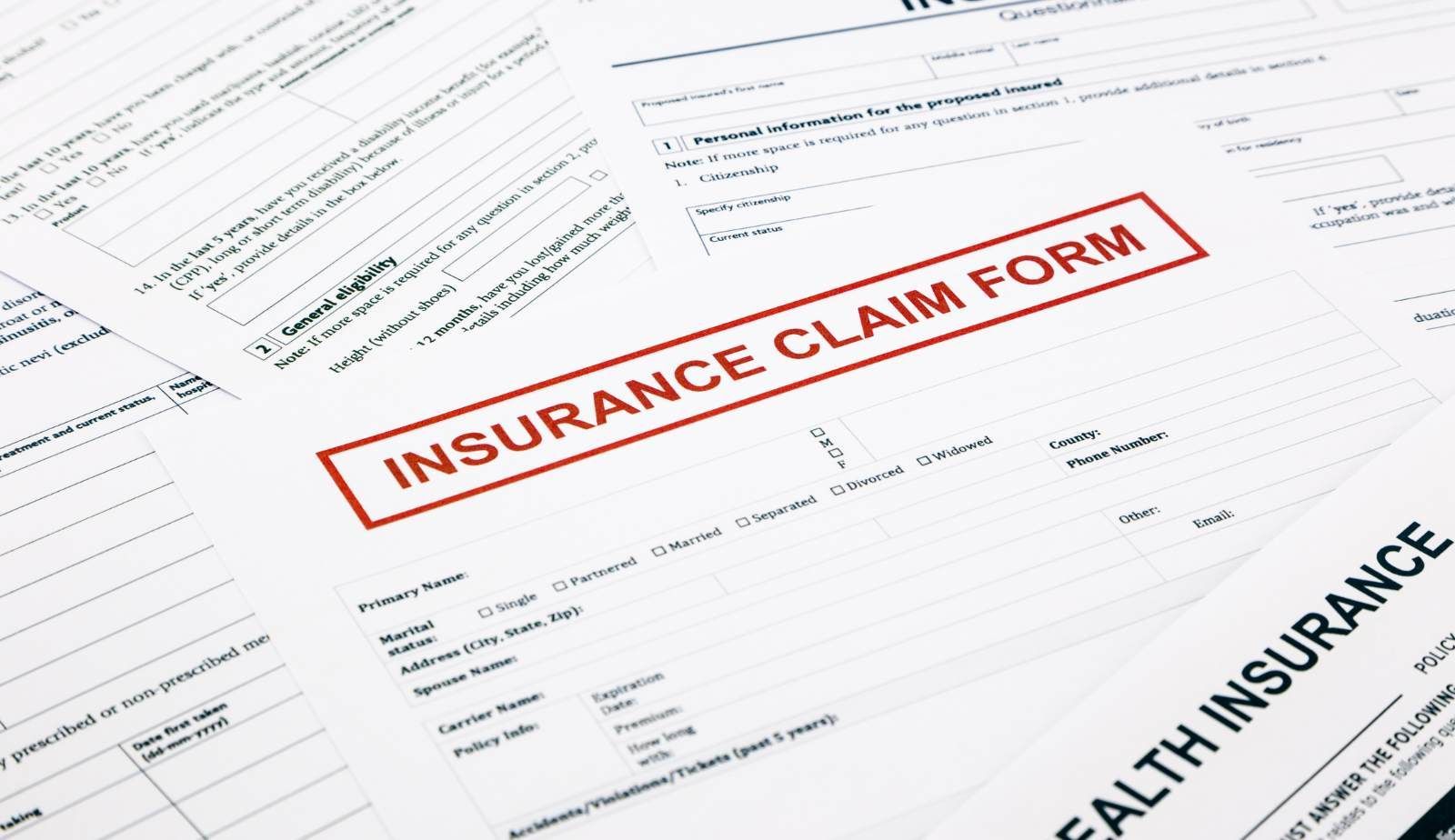
Navigating the complexities of fire and water damage claims can be overwhelming for homeowners in Louisiana. From understanding the intricacies of insurance policies to gathering necessary documentation, the process often feels daunting. Drymax specializes in guiding homeowners through these challenges, ensuring they have the support needed to effectively document and file their claims. Accurate and thorough documentation is crucial for a successful claim. Homeowners need to capture all aspects of the damage, including photographs, estimates, and reports from restoration professionals. Drymax provides critical assistance in this area, offering expertise that helps clients present comprehensive information that insurers require for timely processing. Louisiana's unique climate often exacerbates risks associated with both fire and water damage, making the role of a knowledgeable partner even more vital. With Drymax's commitment to excellence, homeowners can feel assured that they have access to the resources and guidance needed for navigating the insurance claims process confidently. Why Documentation Matters in Fire & Water Claims Accurate documentation is crucial for Louisiana homeowners navigating fire and water claims. It serves as the foundation for successful insurance claims, aiding in the assessment of damage and the determination of compensation amounts. Proper records can mitigate disputes and facilitate a smoother claim process. The Importance of Accurate Records Detailed documentation is essential when filing insurance claims after fire or water damage. Accurately recording the extent of damage helps establish the legitimacy of claims. Homeowners should photograph affected areas, keep invoices for repairs, and maintain records of communications with their insurance company. Comprehensive documentation also supports claims regarding personal property loss. Items lost or damaged can be itemized and valued, ensuring that homeowners receive fair compensation. Moreover, timely documentation prevents issues related to delays in claim processing. Early records are invaluable before any repairs or cleaning occur, preserving evidence of the damage. Common Documentation Mistakes Many homeowners make critical mistakes when documenting damage, which can jeopardize their claims. One common error is failing to take sufficient photographs. Images should show clear views of the damage and include timestamps for validity. Another mistake is not keeping a detailed inventory of damaged items. Homeowners often overlook small, yet valuable possessions, leading to unclaimed losses. It’s vital to record purchase dates and values for all affected property. Miscommunication with insurers is also prevalent. Homeowners may neglect to follow up on claim status or fail to respond promptly to requests for additional documentation. Staying organized and proactive can prevent these pitfalls. Benefits of Professional Assistance Engaging professionals like Drymax offers significant advantages for documenting fire and water damage claims. Experts understand the nuances of insurance requirements and can help homeowners navigate the complexities of the claims process . Professional documentation services ensure comprehensive records are created, reducing the burden on homeowners. They are trained to capture critical evidence and provide clear, thorough inventories of affected items. Additionally, experts can handle communications with insurance companies, ensuring that all deadlines are met and documentation is submitted correctly. This support can substantially improve the likelihood of receiving fair compensation for losses. How Drymax Supports Louisiana Homeowners During the Claims Process Navigating the claims process after fire or water damage can be overwhelming for homeowners. Drymax provides essential support at every step, ensuring that clients receive the assistance they need to document damage accurately and communicate effectively with insurance companies. Initial Assessment and Safety Evaluation The process begins with an initial assessment conducted by Drymax's certified restoration experts. They prioritize safety by evaluating the property for hazards such as structural damage or mold growth. This assessment outlines immediate risks to the homeowner and identifies areas needing urgent attention. Drymax's team documents the conditions through photographs and detailed notes. This information lays the groundwork for determining the scope of repairs. By ensuring safety first, Drymax helps homeowners feel secure before any remediation begins. Detailed Damage Reporting After the initial assessment, Drymax compiles a comprehensive damage report. This report is crucial for supporting homeowners' claims with their insurance. It includes quantitative data on the extent of damage and qualitative descriptions regarding the causes of the loss. Drymax uses advanced techniques to catalog damage, capturing the necessary details to foster transparency with insurance adjusters. Homeowners receive a copy of this documentation, empowering them during the claims process. Detailed reporting can accelerate claims processing and serve as evidence should disputes arise. Communicating With Insurance Adjusters Effective communication with insurance adjusters is vital for homeowners. Drymax assists in facilitating these discussions, ensuring that all pertinent information is correctly relayed to insurance companies. The restoration team leverages their expertise to clarify technical terms and processes, making it easier for adjusters to understand the specifics. If needed, Drymax can also involve a public adjuster to advocate on behalf of the homeowner. This approach enhances the likelihood of a fair settlement, ensuring that all claims are handled professionally and efficiently.
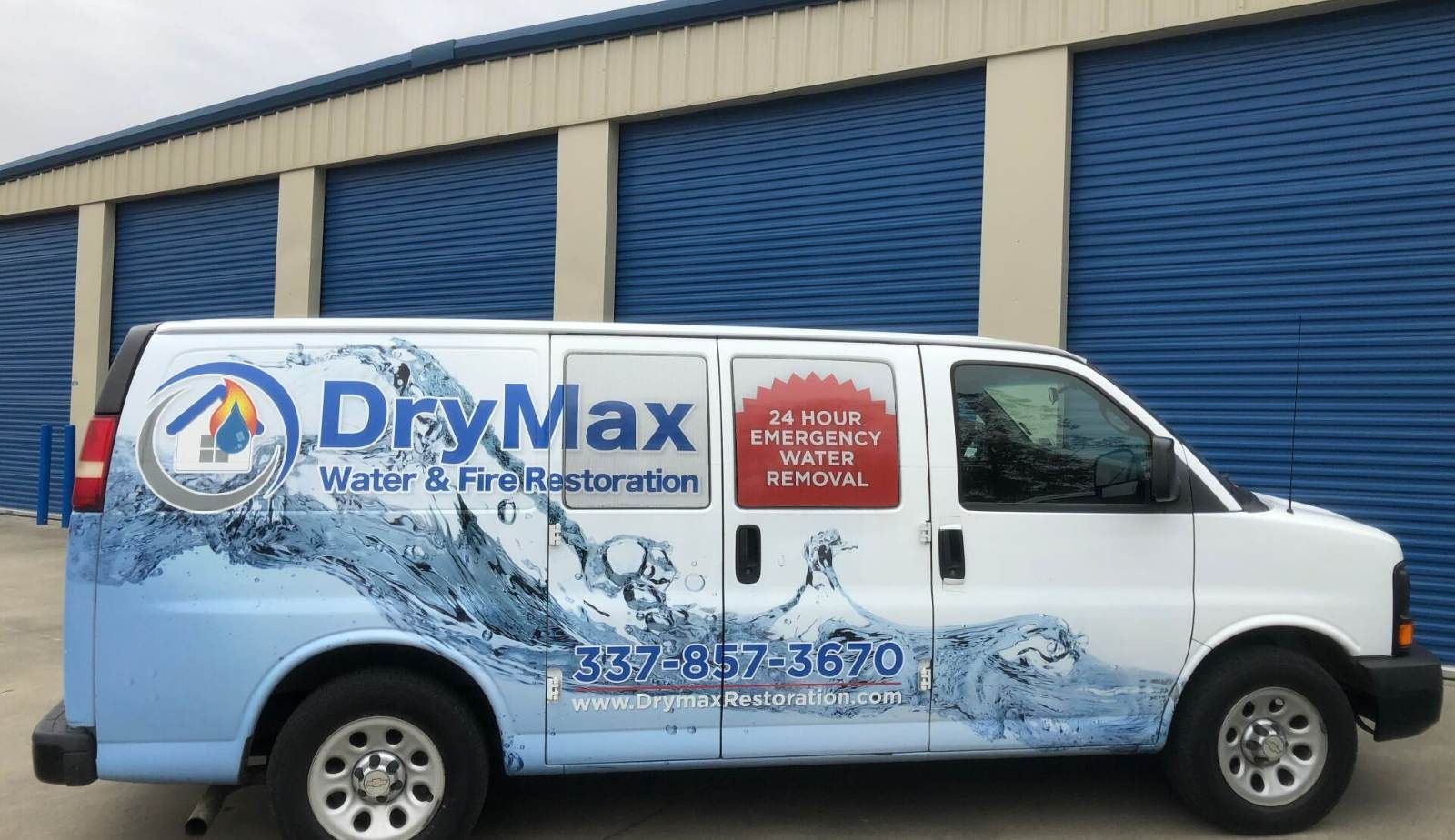
When disaster strikes due to water or fire damage, swift action becomes crucial. Drymax offers 24/7 emergency response services across Louisiana, ensuring that help is always just a phone call away. Their team is dedicated to minimizing damage and restoring properties to their original condition quickly and efficiently. Residents and business owners can expect immediate assistance and a guaranteed 60-minute response time when they reach out to Drymax. With certified professionals and the latest technology at their disposal, they provide specialized services tailored to various situations, from water extraction to smoke odor removal. Drymax’s commitment to customer satisfaction makes them a reliable choice during emergencies. Choosing Drymax means having access to not only timely intervention but also comprehensive solutions designed to ease the stress of recovery. From free inspections to direct insurance billing, they streamline the restoration process to help clients get back on their feet as soon as possible. Understanding Drymax’s 24/7 Emergency Response in Louisiana Drymax offers comprehensive emergency response services for water and fire damage across Louisiana, ensuring prompt assistance whenever disaster strikes. The following sections detail the restoration services available, the scope of 24/7 availability, and what clients can expect after making contact. Overview of Restoration Services Drymax specializes in emergency restoration services, addressing various needs such as water damage, fire damage, and mold remediation. Their trained technicians utilize advanced equipment to perform thorough inspections and effective cleanup processes. Key services include: Water Damage Restoration: Quick extraction of water, drying, and dehumidification. Fire Damage Cleanup: Removal of soot, smoke odor elimination, and rebuilding structures impacted by fire. Mold Remediation: Safe removal of mold and preventative measures to protect properties. These services cater to both residential and commercial properties, aiming to restore environments to their pre-incident condition. Scope of 24/7 Availability Drymax is committed to being accessible around the clock. They guarantee a rapid 60-minute response time, ensuring that no client is left waiting during a crisis. Their dedicated team is always ready to tackle emergencies caused by: Water leaks or flooding Fire incidents Storm damage This constant availability allows Drymax to effectively mitigate damages, reduce recovery time, and prevent further complications. Clients can reach out anytime, knowing they will receive timely and efficient service.
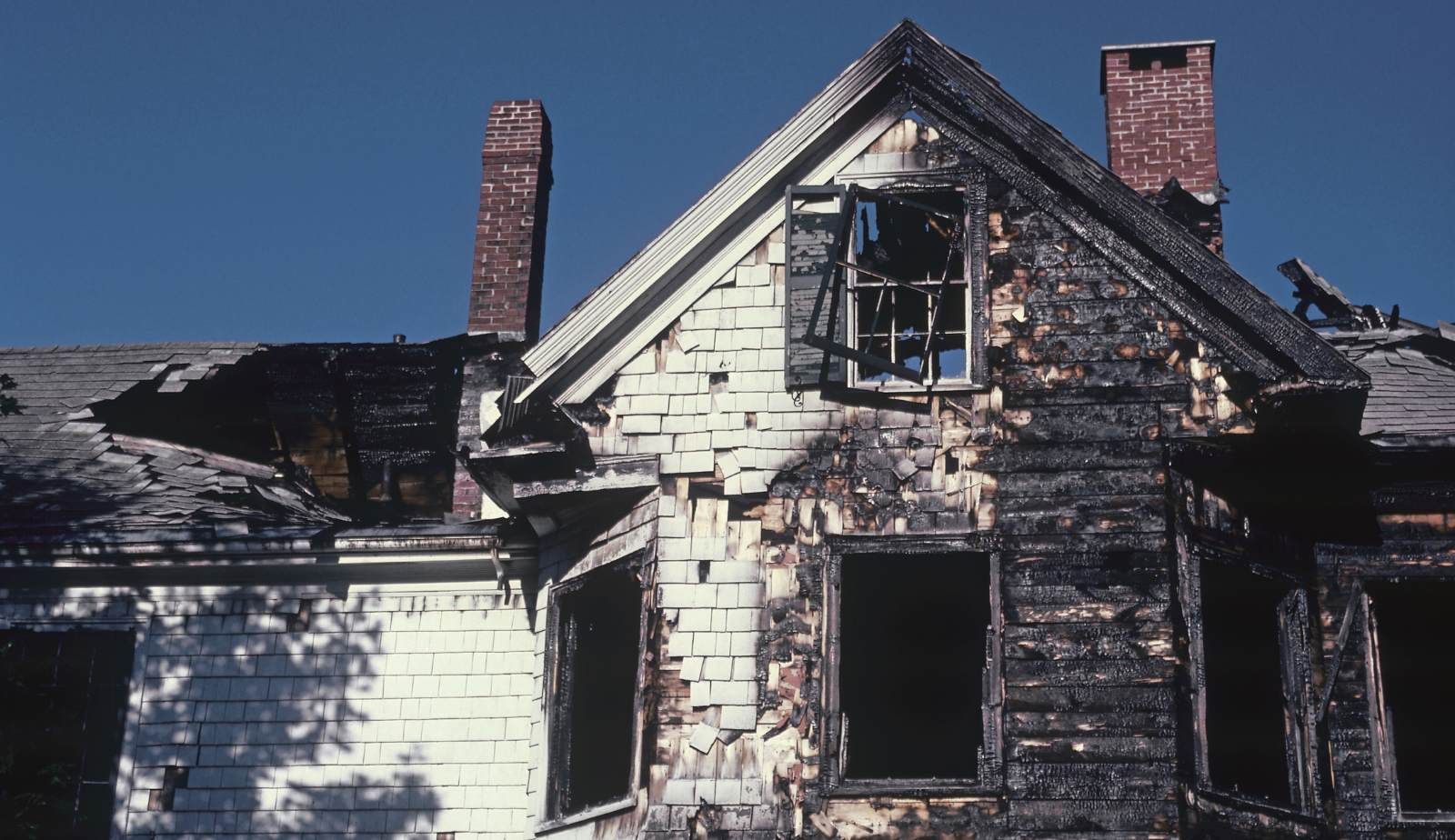
Devastating fires can leave homeowners feeling overwhelmed and uncertain about the restoration process. In Louisiana, DryMax specializes in transforming fire-damaged homes back to their original state. Their comprehensive approach includes advanced techniques for cleaning, repairing, and restoring properties affected by smoke and fire. With a team of trained and certified technicians, DryMax has built a strong reputation over years of service in the Acadiana area. They understand the specific challenges posed by local building materials, which may react differently to fire and moisture. By employing specialized methods tailored to these conditions, they ensure effective restoration that traditional approaches might overlook. For those dealing with the aftermath of a fire, engaging with a professional restoration service is crucial. DryMax provides 24/7 emergency response and a commitment to quality that can significantly alleviate stress and expedite recovery. This level of service helps homeowners reclaim their living spaces efficiently and effectively. Understanding the Challenges of Fire Damage in Louisiana Fire damage restoration in Louisiana involves navigating several complexities due to environmental and structural factors. The combined effects of fire, smoke, and the unique climatic conditions create specific restoration challenges that must be addressed efficiently. Effects of Fire and Smoke on Homes Fire can inflict severe damage to various home components, including walls, ceilings, and personal belongings. The flames can cause charring and burn marks, while the accompanying smoke permeates materials, leaving behind unpleasant odors and soot. Smoke damage is often insidious, affecting areas that may not be directly visible. Key Aspects of Smoke Damage : Odor: Smoke leaves behind strong odors that can persist long after the fire is extinguished. Soot: This residue can damage surfaces and become airborne, settling in hard-to-reach locations. Heat: High temperatures can warp structural elements, weakening the home's integrity. Addressing these effects swiftly is essential to minimize long-term damage. Unique Risks from Humidity and Storms Louisiana's high humidity and frequent storms pose additional challenges during fire damage restoration. The humidity can make it difficult for materials to dry out completely, increasing the risk of mold growth . This factor complicates recovery efforts, as restoration teams must account for pre-existing moisture issues . Considerations : Mold Growth: Damp conditions encourage the development of mold, which can exacerbate health risks. Storm-Related Damage: Fire incidents may occur during storms, creating compounded damage that requires specialized tactics for restoration. Moisture Management: Restoration processes must include effective drying techniques to prevent further deterioration. The local climate necessitates tailored strategies that integrate both fire and water damage restoration. Common Structural and Material Damage Fire not only affects visible surfaces but also compromises the structural integrity of a home. Common areas of concern include: Wood Structures: Burning can weaken beams and joists, posing safety hazards. Insulation: Fire damage may render insulation ineffective or removed during firefighting efforts. Electrical Systems: Exposed wiring from heat can create potential fire hazards if not assessed and repaired properly. Identifying Damage : Professionals conduct thorough inspections to evaluate the extent of damage. Creating a comprehensive list of affected areas helps guide the restoration process and prioritize urgent repairs. Addressing these structural and material concerns is crucial for ensuring the safety and longevity of fire-damaged properties. How Drymax Assesses Fire Damage Drymax employs a systematic approach to evaluate fire damage, ensuring comprehensive assessments that set the stage for effective restoration. This process is vital for determining the extent of damage and formulating a targeted recovery plan. Initial Inspection and Safety Evaluation The assessment begins with an initial inspection of the affected property. Technicians from Drymax evaluate structural integrity and identify any potential hazards, such as unstable walls or electrical risks. Safety is paramount during this phase, and they ensure that the environment is secure before proceeding. This evaluation helps them identify areas requiring immediate attention and formulate a brief overview of damage types, such as: Structural damage Smoke and soot damage Water damage from firefighting efforts Damage Documentation and Reporting Following the safety evaluation, Drymax documents all findings in a detailed report. This includes photographs, notes on damage severity, and a list of affected materials and structures. The documentation serves multiple purposes: It helps in developing an accurate restoration strategy. It is often required for insurance claims. Their experts use specialized software to create comprehensive damage reports, ensuring no detail is overlooked. This thorough documentation lays the foundation for transparent communication with homeowners and insurance adjusters alike. Customized Restoration Planning Armed with inspection data and damage reports, Drymax develops a customized restoration plan. Each plan is tailored to the specific needs of the property and the unique circumstances of the fire incident. This planning stage considers: The type of materials affected The necessary equipment for restoration Expected timelines for each phase of work Stakeholder input, including feedback from the homeowner, is valued, ensuring that all parties understand the planned approach. This meticulous planning establishes a clear path toward restoring the home to its pre-loss condition efficiently and effectively.
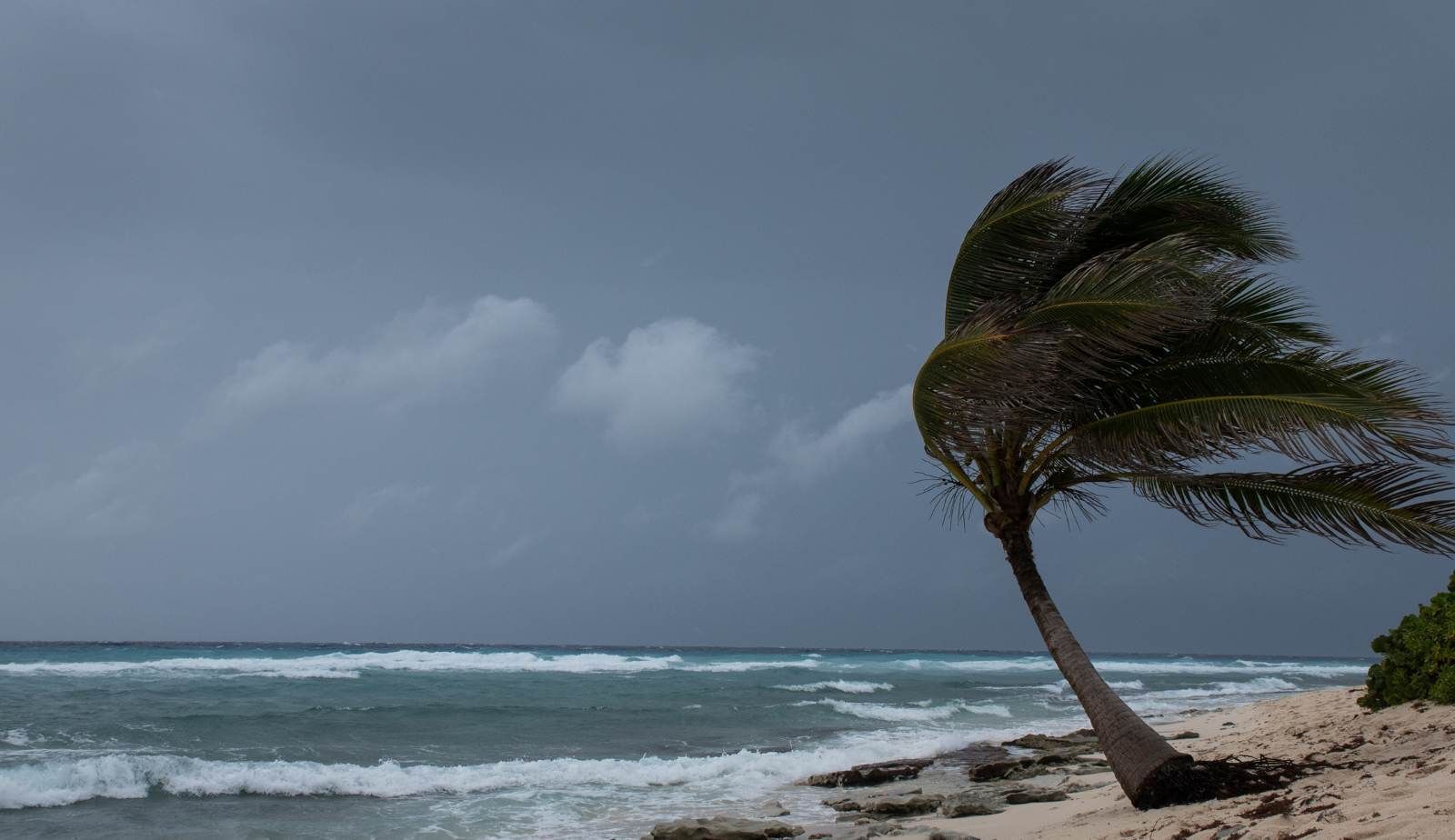
As hurricane season approaches, homeowners in Louisiana must assess their preparedness for potentially severe weather events. A proactive approach can significantly reduce damage and enhance safety during storms. It is essential for residents to review their emergency plans , secure their property, and ensure they have necessary supplies at the ready. Knowing that hurricanes can impact the region with high winds, flooding, and power outages, it's crucial to take actionable steps to protect one's home. This includes checking insurance coverage , reinforcing structures, and being aware of evacuation routes. Following expert advice, like that from Drymax, can make a difference in how well a home withstands the challenges of hurricane season. The changing climate patterns suggest that storms may become more intense, making careful preparation even more critical. Engaging in thorough planning now will provide homeowners with peace of mind as they face the Atlantic storms that frequent their area each year. Assessing Hurricane Risks for Louisiana Homes Evaluating hurricane risks is crucial for homeowners in Louisiana, given the state's vulnerability to powerful storms. Understanding the categories of hurricanes and analyzing past storm activity can help homeowners make informed decisions about preparing their properties. Understanding Hurricane Categories and Damage Potential Hurricanes are classified using the Saffir-Simpson Hurricane Wind Scale, which ranges from Category 1 to Category 5. Each category indicates the potential wind speed and associated damage: Category 1 : Winds of 74-95 mph; minimal damage primarily to unanchored mobile homes and trees. Category 2 : Winds of 96-110 mph; significant roof damage and possible power outages. Category 3 : Winds of 111-129 mph; devastating damage occurs to homes, with most trees uprooted. Category 4 : Winds of 130-156 mph; severe damage; most of the area will be uninhabitable for weeks or months. Category 5 : Winds exceeding 157 mph; catastrophic damage; total destruction of many buildings. Knowing the specific category risks helps homeowners implement appropriate precautionary measures and insurance coverage. Historical Hurricane Activity in Louisiana Louisiana has a long history of severe hurricanes affecting its residents. Notable storms include Hurricane Katrina in 2005 and Hurricane Ida in 2021. The impacts of these hurricanes involved widespread flooding , power outages, and massive property damage. From June 1 to November 30, Louisiana faces the heightened risk of hurricanes. Homeowners should assess their properties based on historical data, considering factors such as: Proximity to water bodies Elevation levels The sturdiness of home construction Researching local history and patterns can guide residents in making proactive decisions concerning hurricane preparedness and safety. Understanding past events allows for better future planning. Insurance Coverage Essentials for Hurricane Season For homeowners in Louisiana, preparing for hurricane season includes a thorough examination of insurance coverage. Adequate protection against storm damage is essential for safeguarding homes and financial stability. Reviewing Homeowners Insurance Policies Homeowners in Louisiana should carefully evaluate their homeowners insurance policies before hurricane season. Policies typically cover damage from wind and debris, but many do not include flooding, which is a significant risk during hurricanes. Key considerations include: Coverage for Additional Structures : Ensure that structures like garages and sheds are included. Personal Property Protection : Check if personal belongings, such as furniture and electronics, are adequately covered. It's advisable to consult with an insurance agent to verify policy details and make any necessary adjustments. This proactive approach can prevent unpleasant surprises in the event of a storm. Flood Insurance Considerations Flood insurance is often separate from standard homeowners policies. It is vital for homeowners in Louisiana to secure additional flood coverage given the state's vulnerability to heavy rains and storm surges. Important facts to know include: Policy Activation : There is typically a 30-day waiting period for flood insurance . National Flood Insurance Program (NFIP) : Homeowners can obtain flood insurance through the NFIP, which may offer subsidized rates. Understanding the specifics of flood insurance coverage, including what perils are covered, is critical to comprehensive protection. Understanding Deductibles and Coverage Limits Homeowners should also familiarize themselves with policy deductibles and coverage limits . Deductibles determine how much out-of-pocket expense is needed before the insurance coverage begins. Consider these factors: Higher Deductibles : Choosing a higher deductible can lower monthly premiums but increases costs during a claim. Coverage Limits : Know the maximum amount the insurer will pay for damages. It is essential to ensure these limits meet the potential costs of hurricane-related damages. Reviewing and adjusting deductibles and limits can tailor coverage to individual financial situations and risk exposures. This step is critical for adequate hurricane preparedness.


